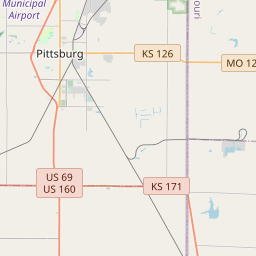G.A.R.-W.R.C. Civil War Memorial
Historical marker location:






April 12, 1861: The Civil War begins with the Confederate attack on Fort Sumter, located in South Carolina's Charleston Harbor.
April 15, 1861: President Abraham Lincoln issues a call for 75,000 volunteers to serve in the Union Army to suppress the rebellion.
May 24, 1861: The first major land battle, known as the First Battle of Bull Run (or First Battle of Manassas), takes place in Virginia. It ends in Confederate victory.
September 17, 1862: The Battle of Antietam in Maryland becomes the bloodiest single-day battle in American history, with heavy casualties on both sides. The Union forces, commanded by General George McClellan, manage to halt Confederate General Robert E. Lee's advance into Union territory.
January 1, 1863: President Lincoln issues the Emancipation Proclamation, declaring that all slaves in Confederate-held territories are to be set free. However, the proclamation does not immediately free all slaves in the United States.
July 1-3, 1863: The Battle of Gettysburg in Pennsylvania takes place, resulting in a significant Union victory and inflicting heavy casualties on Confederate forces. It marks a turning point in the war.
November 19, 1863: President Lincoln delivers the Gettysburg Address, emphasizing the principles of liberty, equality, and the preservation of the Union.
April 9, 1865: General Robert E. Lee surrenders to Union General Ulysses S. Grant at Appomattox Court House in Virginia, effectively ending the Civil War.
April 14, 1865: President Lincoln is assassinated by John Wilkes Booth while attending a play at Ford's Theatre in Washington, D.C.
May 10, 1865: Confederate President Jefferson Davis is captured, signaling the collapse of the Confederate government.
December 6, 1865: The Thirteenth Amendment to the United States Constitution is ratified, officially abolishing slavery throughout the country.
While this timeline provides an overview of key events, it is important to note that the Civil War spanned over four years, from 1861 to 1865, and encompassed numerous battles, campaigns, and political developments that shaped the course of American history.
The famous Dodge City of the Wild West was located in Kansas and was known for its saloons, cowboys, and outlaws.
The county's development was greatly influenced by the expansion of the railroad in the late 19th century. The Atchison, Topeka and Santa Fe Railway played a significant role in shaping Ford County's economy and attracting new residents. The introduction of rail transportation brought increased opportunities for trade and commerce, leading to the establishment of towns such as Dodge City.
Dodge City, the county seat and largest city in Ford County, quickly became a center for cattle trading and ranching. During the late 1800s, the city gained fame as a wild and lawless frontier town, known for its numerous saloons, brothels, and notorious outlaws. However, efforts were made to civilize the town, and by the early 20th century, Dodge City had transitioned into a more orderly and prosperous community.
In more recent years, Ford County has experienced growth and diversification in its economy. Agriculture remains an essential component, with crops such as wheat, corn, and sorghum being major contributors. Additionally, the county has seen the development of manufacturing industries, including food processing and automobile parts production. Ford County continues to be a vibrant and dynamic community, preserving its rich history while embracing the opportunities of the present.
Ford County Timeline
This timeline provides a condensed summary of the historical journey of Ford County, Kansas.
- 1855 - Ford County is officially established as a county in the Kansas Territory.
- 1873 - Dodge City is founded as the county seat of Ford County.
- 1875 - The "Dodge City War" erupts, a conflict between lawmen and saloon owners.
- 1878 - The Atchison, Topeka and Santa Fe Railway reaches Dodge City, boosting the town's growth.
- 1882 - The first cattle shipment from Dodge City's stockyards is sent to Eastern markets.
- 1884 - Dodge City becomes known as the "Wickedest Little City in America" due to its wild and lawless reputation.
- 1910 - The population of Dodge City reaches its peak at around 4,000 residents.
- 1925 - The Boot Hill Museum is founded in Dodge City to preserve the town's Wild West history.
- 1942 - The United States Army establishes the Dodge City Army Airfield during World War II.
- 1951 - The Dodge City Airport is constructed.
- 1963 - The Longhorn Building, a historic hotel in Dodge City, is added to the National Register of Historic Places.
- 1983 - The Boot Hill Casino & Resort opens in Dodge City.